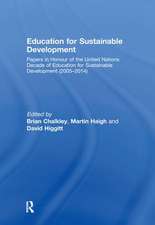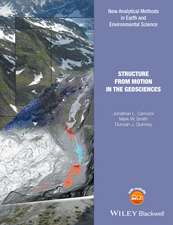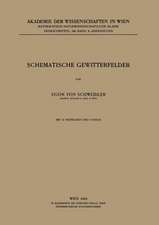Environmental Role of Wetlands in Headwaters: NATO Science Series: IV:, cartea 63
Editat de Josef Krecek, Martin Haighen Limba Engleză Paperback – 19 apr 2006
| Toate formatele și edițiile | Preț | Express |
|---|---|---|
| Paperback (1) | 1655.78 lei 6-8 săpt. | |
| SPRINGER NETHERLANDS – 19 apr 2006 | 1655.78 lei 6-8 săpt. | |
| Hardback (1) | 1455.80 lei 38-44 zile | |
| SPRINGER NETHERLANDS – 24 apr 2006 | 1455.80 lei 38-44 zile |
Din seria NATO Science Series: IV:
- 18%
 Preț: 1225.94 lei
Preț: 1225.94 lei - 15%
 Preț: 640.06 lei
Preț: 640.06 lei - 18%
 Preț: 953.65 lei
Preț: 953.65 lei - 18%
 Preț: 950.84 lei
Preț: 950.84 lei - 18%
 Preț: 950.96 lei
Preț: 950.96 lei - 18%
 Preț: 948.61 lei
Preț: 948.61 lei - 18%
 Preț: 945.92 lei
Preț: 945.92 lei - 15%
 Preț: 644.63 lei
Preț: 644.63 lei - 18%
 Preț: 945.92 lei
Preț: 945.92 lei -
 Preț: 402.56 lei
Preț: 402.56 lei - 18%
 Preț: 1229.91 lei
Preț: 1229.91 lei - 15%
 Preț: 646.43 lei
Preț: 646.43 lei - 15%
 Preț: 647.08 lei
Preț: 647.08 lei -
 Preț: 394.51 lei
Preț: 394.51 lei - 18%
 Preț: 1230.21 lei
Preț: 1230.21 lei - 15%
 Preț: 657.57 lei
Preț: 657.57 lei - 18%
 Preț: 1835.83 lei
Preț: 1835.83 lei - 18%
 Preț: 1825.12 lei
Preț: 1825.12 lei - 18%
 Preț: 958.73 lei
Preț: 958.73 lei - 18%
 Preț: 951.29 lei
Preț: 951.29 lei - 18%
 Preț: 944.51 lei
Preț: 944.51 lei - 18%
 Preț: 1015.55 lei
Preț: 1015.55 lei - 15%
 Preț: 647.08 lei
Preț: 647.08 lei - 18%
 Preț: 1827.80 lei
Preț: 1827.80 lei - 18%
 Preț: 1835.53 lei
Preț: 1835.53 lei -
 Preț: 395.63 lei
Preț: 395.63 lei - 18%
 Preț: 944.99 lei
Preț: 944.99 lei
Preț: 1655.78 lei
Preț vechi: 2019.23 lei
-18% Nou
Puncte Express: 2484
Preț estimativ în valută:
316.82€ • 330.82$ • 261.63£
316.82€ • 330.82$ • 261.63£
Carte tipărită la comandă
Livrare economică 15-29 aprilie
Preluare comenzi: 021 569.72.76
Specificații
ISBN-13: 9781402042270
ISBN-10: 1402042272
Pagini: 356
Ilustrații: IX, 347 p.
Dimensiuni: 155 x 235 x 19 mm
Greutate: 0.51 kg
Ediția:2006
Editura: SPRINGER NETHERLANDS
Colecția Springer
Seria NATO Science Series: IV:
Locul publicării:Dordrecht, Netherlands
ISBN-10: 1402042272
Pagini: 356
Ilustrații: IX, 347 p.
Dimensiuni: 155 x 235 x 19 mm
Greutate: 0.51 kg
Ediția:2006
Editura: SPRINGER NETHERLANDS
Colecția Springer
Seria NATO Science Series: IV:
Locul publicării:Dordrecht, Netherlands
Public țintă
Professional/practitionerCuprins
Headwater Wetlands.- Mapping Wetlands in European Headwater Areas.- The Role of Forest on the Hydrology of Headwater Wetlands.- Role of Grassland Ecosystems in Protection of Forested Wetlands.- The Effect of Peat Land Drainage and Afforestation on Runoff Dynamics.- Impact of Herbaceous Vegetation on Recovery of a Harvested Headwater Catchment.- Leaching of Nitrogen from Upland Forest-Regeneration Sites into Wetland Areas.- Hydrology of Disturbed Peat-Land, Heads of The Valleys, Wales.- Estimation of Water Budget in the Forested Peat-Lands of Western Ireland.- Role of the Planktonic Communities in the Regulation and Indication of Eutrofication Processes in Shallow Mountain Wetlands.- New Wetland Formation in Subsidence Hollows of Western Dondass, Ukraine.- Integrating Wetlands into Watershed Management: Effectiveness of Constructed Wetlands to Reduce Impacts from Urban Stormwater.- Disasters and Climate Change - Their Relation with Wetland Headwaters.- The Alleghe Lake (Dolomites, Italy): Environmental Role and Sediment Management.- Alpine Wetlands from Ecological Network to Land-Based Risk Prevention.- Headwater Resources and Headwater Hazards: Perspectives from Environmental Education.- Hydrology of Wetlands in the Headwaters of Great African Rivers.- Headwater Wetlands in Eastern and Southern Africa.- Economic Contribution of Headwater Wetlands.- The Lake Kinneret Drainage Basin.- Environmental Change in Headwater Peat Wetlands, UK.- Environmental Problems of Headwater Wetlands in Hungary.- Headwater Wetlands in the Czech Republic.- Analysis of the Water Balance of Small Páramo Catchments in South Ecuador.- Summary Reports.- Headwater and Wetland Protection.- Next Generation of Watershed Management Programmes.- Conclusion – Wetlands in Context.- Erratum.
Caracteristici
Sees wetlands in context Considers wetlands in headwater – upland and mountain regions Holistic examination of wetlands in their wider environmental, hydrological and socio-economic contexts – most previous work treated wetlands in isolation Outcome of the ‘Nairobi Declaration for the International Year of Freshwaters’ 2003











